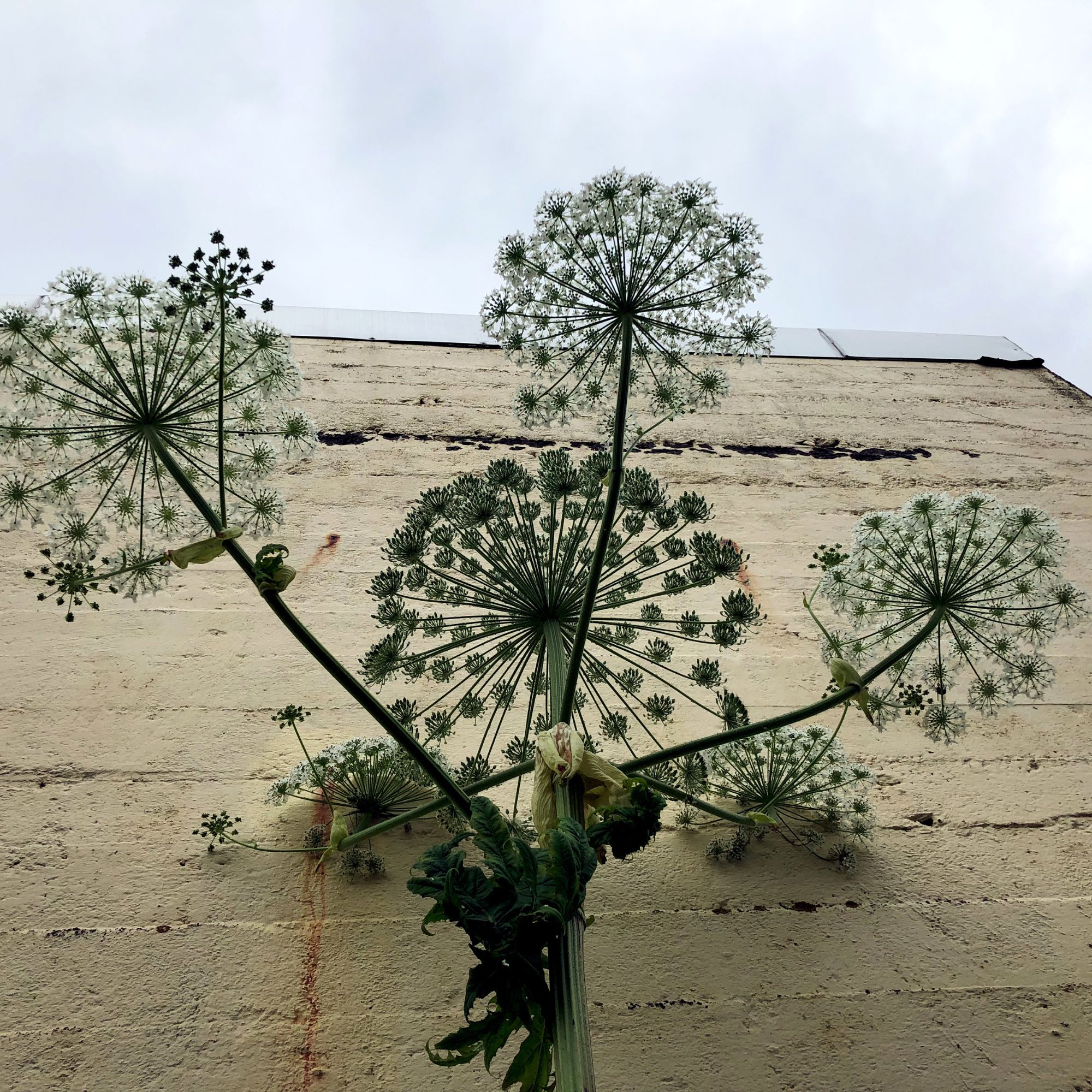
Undeniably striking as it is, the majority of people will want to learn how to get rid of giant hogweed if they spot it in their garden – not least of all because giant hogweed has been dubbed a dangerous and invasive plant.
Found in many parts of the UK, this tall flowering plant (a not-so-distant relative of the far more trendy cow parsley) is easily identifiable by its clustered white florets and its ability to grow over 10ft in height. And, while it's undeniably striking, it's worth noting that this is one of those weeds you absolutely need to eradicate fast, not least of all because its sap can cause severe skin burns.
'While it isn’t imperative to remove giant hogweed, it is highly recommended,' says Morris Hankinson, director of Hopes Grove Nurseries.
'This invasive species will, if left to its own devices, soon take over your garden,' he continues, noting that this might not be the worst thing for those with very large gardens, especially if it's allowed to 'grow out of the way where it can’t be touched'.
'Otherwise, it’s best left to the countryside,' he finishes firmly.
How to get rid of giant hogweed
Before you set to work eradicating giant hogweed from your garden, it is worth noting that you need to take steps to do so safely.
'Not only is giant hogweed invasive but it can also cause severe skin burns,' says Morris. 'This is due to the chemicals in the sap and it can even cause problems simply by brushing against the plant – it makes your skin more sensitive to sunlight, which can result in burns and blisters.'
If you are planning on removing this pesky plant from your garden, then, it is best to either reach out to a professional, or to take care to cover your skin so the sap doesn’t touch you at all.

With that in mind, then...
What you will need
If you want to get rid of giant hogweed safely, it's important to (as mentioned already) purchase the following safety equipment:
- Protective gloves: synthetic materials are best, as they are less likely to soak up plant sap or be penetrated by plant hairs, so try something like the Kingfisher GGHDRR Rubber Gloves from Amazon
- An eye mask or goggles: the Oregon 539169 Professional CE Certified Safety Goggles from Amazon can be worn over glasses
- Water-resistant clothing with long sleeves: again, look for synthetic materials – and be sure to change out of your gardening clothes (and wash them quickly) once you've finished the task at hand
- A good-quality SPF: it's a good idea to apply sun cream, such as Serious Shade SPF 50 from Aldi, before approaching these plants, just in case any of the sap does get on you
How to remove giant hogweed
Once you've wrapped yourself up safely in protective gear, it's best to figure out how to get rid of giant hogweed in a manner that best suits you and your garden.
While some targeted weedkillers may do the trick (speak to an expert at your local garden centre before taking this route), the Royal Horticultural Society (RHS) advises you opt for a non-chemical method instead: namely, pulling up young plants by hand.
Best done in May when the soil is moist and the giant hogweed has reached a reasonable height, you'll likely need to loosen the roots with a fork first. But, before you get to work, be sure that the plant hasn't already produced its flowering spike.

If it has, you will need to wait long enough to 'allow the flower spike to form and then remove it before the flowers fade'.
Be sure to mulch the area well after removing giant hogweed, to suppress any regrowth. However, 'if you're dealing with a large area of giant hogweed, it's best to contact a professional for its safe removal,' adds Morris.
How to dispose of giant hogweed
It's important to, when learning how to get rid of giant hogweed safely, take steps to ensure that you don't make any expensive garden waste mistakes with your cuttings: do not compost them, for example, as this can serve to further the spread of the plants.
Instead, it is best to burn them or dispose of them in a licensed landfill site – although some areas may have specific guidelines for disposing of invasive plants, so it's always worth contacting your local authority to learn about proper disposal methods.
FAQs
What is the best way to get rid of giant hogweed?
The best way to get rid of giant hogweed is to pull young plants up by hand and dispose of them accordingly. However, if this invasive plant has taken over a large portion of your garden, it's best to call in the professionals, as they will have the tools and PPE to deal with it safely.
How do you know if it's giant hogweed?
'It is worth trying to identify hogweed before you panic, as there's also a native hogweed which can grow tall and cause an itchy rash but that is far less problematic than giant hogweed,' says Morris, who notes that this version can be left alone for pollinators to enjoy in your wildlife garden.
'The main difference is that giant hogweed leaves are pointed at the tips, and native hogweed leaves are rounded,' he adds.
Should you report giant hogweed?
While there are no regulations stating that you need to notify anyone giant hogweed is growing on your land, it's worth contacting your local authority, as they will often be able to advise on a best course of action.
Now that you know how to get rid of giant hogweed safely, it's time to get out in your garden and inspect it for any invasive plants that need banishing. Happy hunting...







